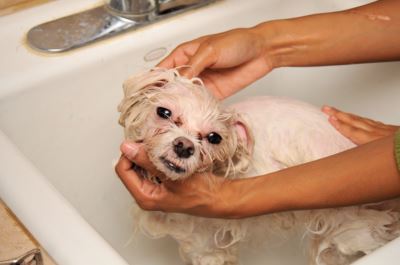We all have guests who enjoy outstaying their welcome. But for the case of our pets, these guests are causing extreme discomfort. You know who these guests are? Fleas and ticks. These parasites stick themselves to the bodies of your cats and dogs, sucking their blood.
While fleas are very disturbing for us humans, they are the most common parasites that affect our pets. Whether you believe it or not, they trigger allergies. Therefore, if not treated properly, they could result in different medical complications.
Common Problem Caused by Fleas


As mentioned, fleas can lead to a variety of medical issues for cats and dogs. These include the following:
1. Skin Problems
Though fleas can trigger allergic reactions, they can also lead to skin infections and other health problems. If this happens, take your pet to his vet right away and seeks special medications.
2. Anemia
When there is flea infestation, chances are your pet will suffer anemia. This condition will lower the red blood cell count, affecting the immune system and making your pets more vulnerable to various diseases. According to experts, the younger pets are more at risk to anemia caused by these pesky parasites.
3. Tapeworms
It may sound odd, but your pets may actually catch tapeworms while trying to lick away those ticks. These tapeworms are another form of parasites that thrive in your pet’s intestines.
4. Early Death
If your pet is very small, be careful. Even if it’s just a few fleas, they have the power to suck all the blood from him. And if that happens, your pet could die.
How to Detect Fleas
Do not be so lax. You never know that those stubborn fleas may be hiding somewhere at home. These parasites may live for months, even without food. They might be in your closet, in your furniture pieces, in your lawn, and even in your clothes. Thus, be extra careful because they are just waiting for the right time to spring into action.
So, how do you identify a flea? It’s simple. If you notice any small object that looks like a grain of rice on your pet’s fur, he’s got fleas.
How to Get Rid of Them


If you visit pet stores, you will see a plethora of products that promise they can get rid of fleas in a few applications. However, do take note that they might not be as effective as you think. In fact, even spraying insecticides won’t guarantee excellent results because they are capable of developing a certain level of resistance that will last long-term.
Here’s what you should do.
1. Bathe your pet regularly.
This is the most important step. To keep your cats and dogs free from flea, be sure to keep them clean all the time. Give them regular baths and shampoo thoroughly to make them less inviting to parasites. You can purchase special shampoos that are designed to keep fleas at bay.
2. Use recommended medications.
There are many different medications you can apply to your pets to prevent fleas. Some of them are so effective that they can also keep your fur babies protected against mosquitoes and ticks.
In general, these medications will last for a month, which means you need to wait for the next month to apply another layer. You can massage it to your pet’s shoulder blades to keep him from licking it away. If your pets begin to show signs of allergic reactions, see your pet’s vet right away.
3. Keep your surroundings clean.
The best way to combat these fleas is to keep your environment clean. Begin by killing those that are not on your pet’s fur. Look into your couch, in your clothes, and in the carpet. For each flea you find, 99 more are hiding. To easily clean your environment, here’s what you should do.
- Vacuum your home at least thrice a week.
- Clean and empty the vacuum. The eggs might hatch inside and you don’t want them to crawl out.
- Wash the cat or dog bed
- Clean the areas of your home where your pet enjoys staying most of the time.
If you think these pests have already reached the hard areas of your home, you might want to contact professional pest exterminators. You can also purchase yard sprays to combat those fleas hiding in the lawn. Just be sure that you follow the guidelines to protect your pets and kids.
Technically, flea control requires ongoing attention. It’s not just a one-time task. For more information about keeping those fleas away, seek professional help.
As an owner, you can always control fleas in your own little ways. Frequent grooming and maintaining cleanliness are just a few things you can do. You can also do your homework. Research online and ask your fellow pet owners. In no time, those pesky fleas would no longer be welcomed.
Image Sources: [1] [2] [3] [4] [5] [6] [7]





